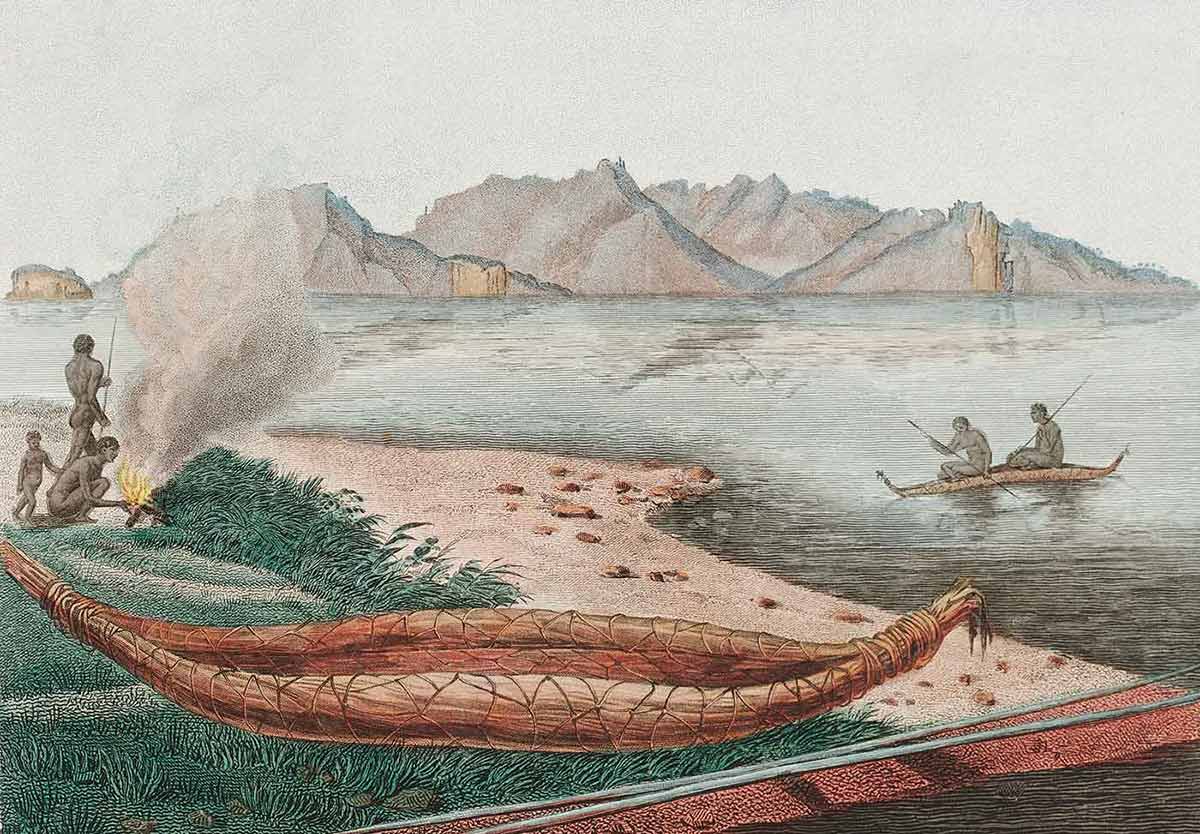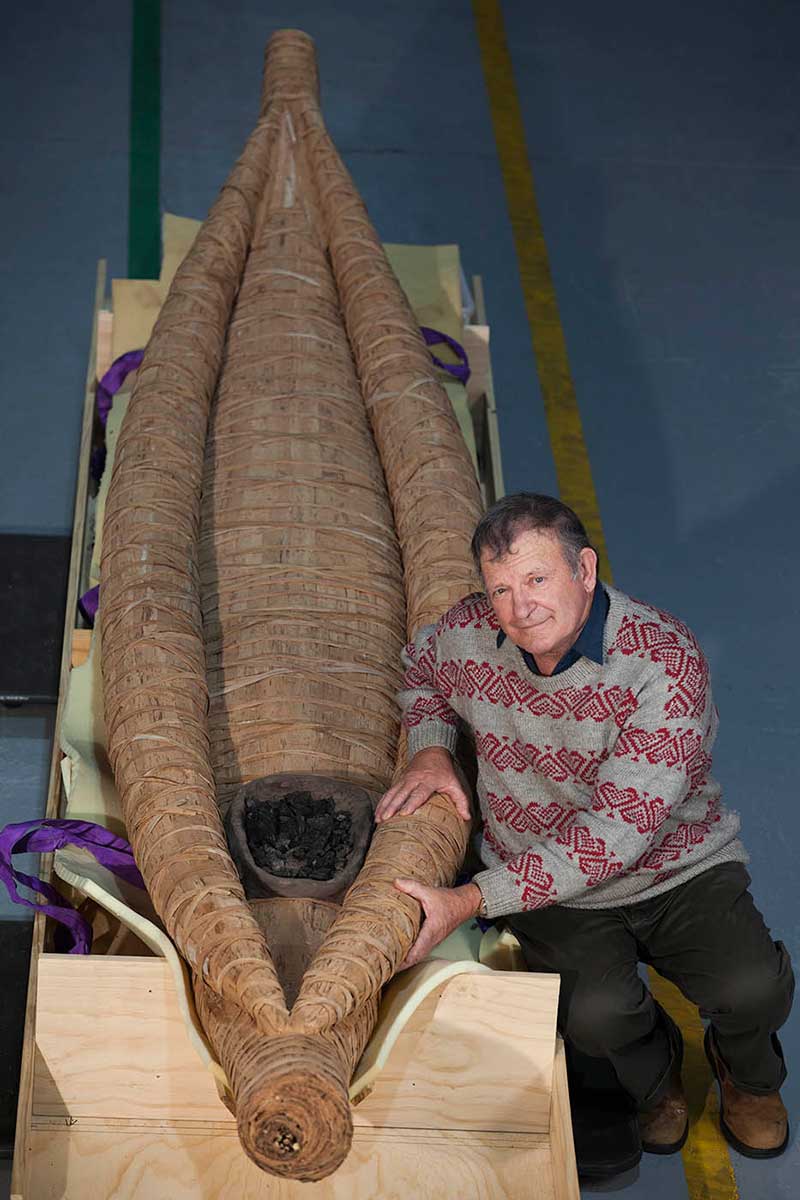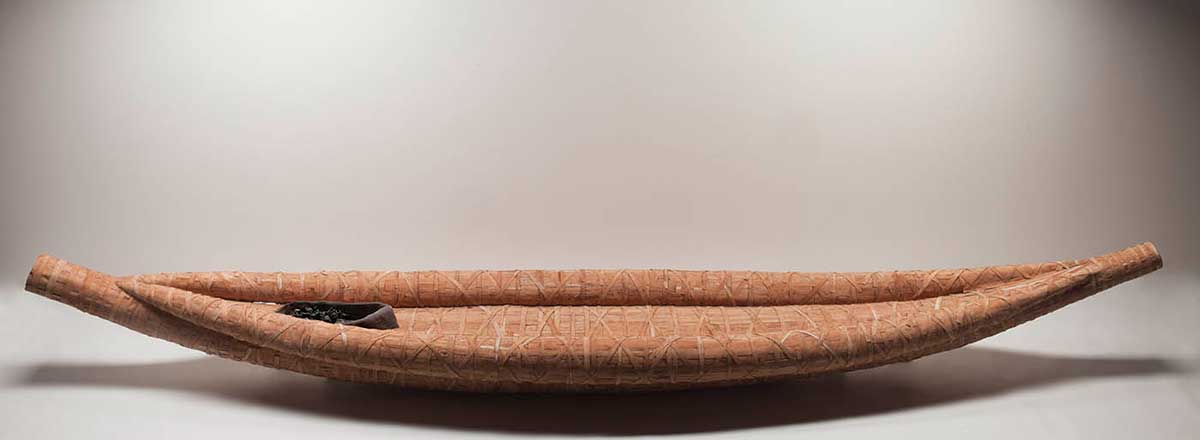This modern Tasmanian bark canoe was made to an ancient blueprint by Rex Greeno. At 4.7 metres in length, it is an impressive example of the canoes made by Aboriginal people in the 19th century to journey around coastal Tasmania and its offshore islands.
European encounters

French explorers visiting Tasmania in the late 18th and early 19th centuries, and other early European settlers to the island, made frequent references to bark canoes that were paddled around southern Tasmania and its offshore islands.
The canoes were said to be strong enough to carry up to six men across stormy seas, and often included a hearth for fire at one end. They allowed travel across water, and were used in the search for swan and duck eggs and for hunting seals.
Models of these canoes were made for Europeans by Aboriginal people at the time, and rare examples survive in museum collections.

Rex Greeno’s family
Rex Greeno was born on Flinders Island in Bass Strait.
His Aboriginal heritage comes from his mother, Dulcie Greeno, a noted shell necklace maker, and his grandfather, Silas Mansell, who taught him mutton-birding, kangaroo and wallaby-snaring, and how to make craypots and boats.
A fisherman like his father, Greeno drew on his background to make traditional Tasmanian paperbark canoes.
In his retirement, Greeno used his knowledge of the sea as inspiration for reconstructing the traditional canoes, which had not been seen in Tasmania since the early 19th century.
Greeno taught himself the craft by reading extensively and by experimenting with collecting and processing various raw materials and ways of constructing the canoes.
This is the fifth canoe that Greeno has made, and it was specially commissioned for the National Museum.
It was made with his son Dean and grandson Harrison to pass these ancient skills on to new generations.
In our collection
